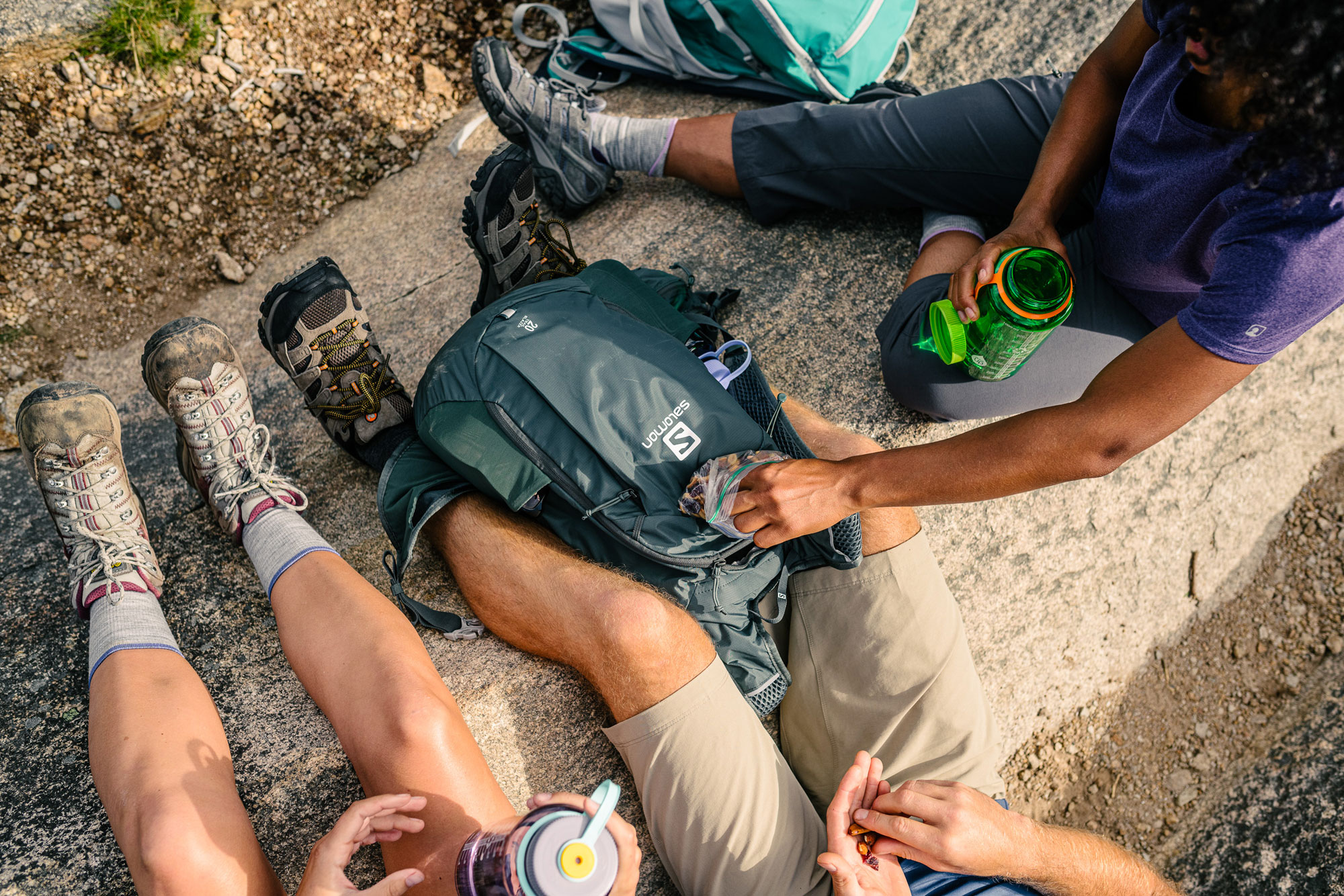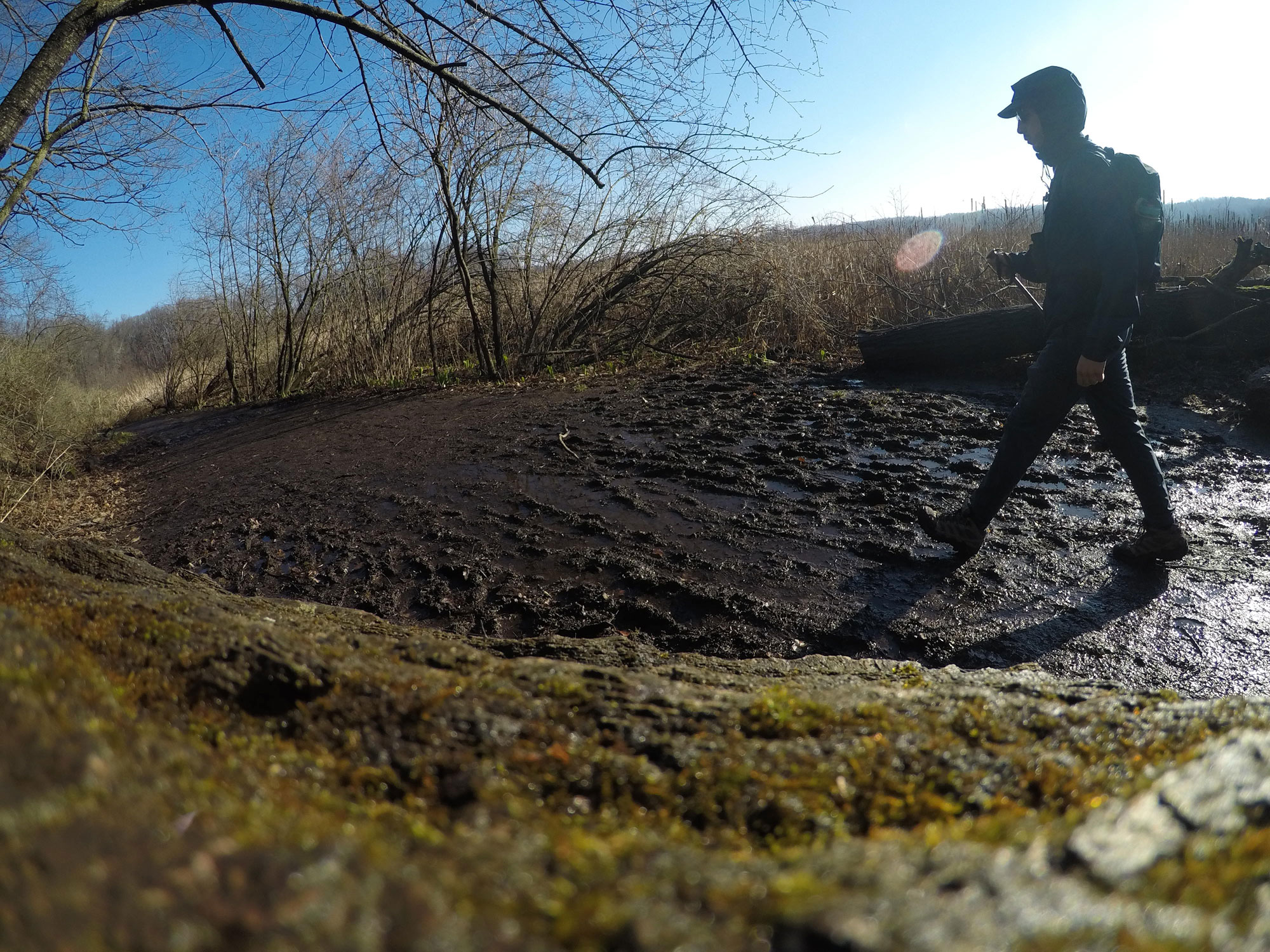No one is perfect. Leave No Trace ethics can honestly be a little complicated sometimes. But there are a few pretty common mistakes that a lot of people make and that you’re likely to witness on your next hike. Getting these right isn’t going to turn you into a trail savant, but it will make you a slightly better hiker and keep our trails in better shape for more people and for longer.
 1. Leaving “Biodegradable” Items Behind
1. Leaving “Biodegradable” Items Behind
Sure, that banana peel or apple core may technically be biodegradable. But have you thought past what happens after you launch those into the woods, waiting for the crack or thud of it landing? Organic litter (a much better term for these items) can remain on a forest floor for several months or years. This, like other Leave No Trace issues, causes a snowball effect. That waste will sit and attract wildlife, and potentially change their feeding habits as they will look for more materials close to these trails. Simply put, regardless of if it came from the ground or the supermarket, carry out all trash with you back to your car.
2. Leaving Behind TP Flowers
A bigger bummer than stumbling upon food scraps or trash can be stumbling upon human waste. If taken care of correctly, there should be no sign of it on trail, and if you went off-trail (as you should), there should still be no sign! A proper cathole, which is one of the most widely accepted waste disposal methods in the outdoors, should be dug 200 feet from any trail, water source, or campsite. Bring along a small trowel, and dig 6 to 8 inches deep and 4 to 6 inches in diameter in an inconspicuous location. When done with your business, cover the hole back up with original soil and organic materials. Bringing along a small bottle of biodegradable soap may be handy, too. And pack out your toilet paper!
3. Widening Trails to Avoid Mud
As mud season arrives, those who see footsteps around puddles of slick, thick terrain, will follow them. These are not maintained detours, but hiker-created paths chosen to bypass mud, and they can widen and damage the trail. Deciding to travel off-trail can cause ground erosion and harm to vegetation, so just because someone else does it, doesn’t mean you should too! Instead, think about ways you can trudge through unfavorable terrain while keeping your body clean and dry, like wearing water proof boots, ankle gaiters, and using a trekking pole or two to maintain your balance. Maybe you’ll even get lucky, and have your best option available: a nice rock path to hop along.

4. Hiking and Camping on Sensitive Terrain
Yes, you can actually harm the ground just by stepping on it! Some vegetation is pretty delicate. The alpine zones, like those above tree line in the Adirondacks, hold plants that have been around for thousands of years, and will not recover or grow back if trampled. Similarly, desert ecosystems contain cryptobiotic soil, alive with organisms that help protect it from erosion by rain or wind. Be sure to follow blazes or trail markers, and if unmarked, check for cairns or signs of herd paths. If you don’t follow Leave No Trace ethics here, you could be scarring the terrain forever.
5. Feeding Wildlife
There’s no denying the out-of-this-world feeling that comes from a creature of the woods approaching you to accept food. Maybe a few deer draw close to an extended hand on a nature trail, or a chipmunk comes up to your feet near a summit and takes interest in the trail mix you drop. We hate to pop your bubble, but these species would not naturally approach you looking for food—That shouldn’t be happening. They are this way due to human interaction, and the effects are similar to that of tossing an apple core off trail. The animals may become less dependent on their environment and feeding habits, can spread potential disease, and potentially become aggressive. So look for a better feeling than feeding animals, like knowing those calories will help you through your hike!
6. Not Putting a Fire Out Cold
The campfire has been one of the visual definitions of a joyful night outdoors for a long time. If a fire is in the books for you and smores or stories are coming, know what to do after the smoke has cleared and you’re ready to pack it in for the night. If you’re at a designated campsite, use a designed fire ring; if you’re not, stay away from rock faces that can be scarred as well as fragile soil or plants, and be sure to use dead laying wood. Once you’re finished with the fire, be sure all wood or coals are a fine ash, soak them with water, and scatter away from camp. If you’re not using an established fire put, by the time you’ve left, the next person shouldn’t be able to tell there was once a fire there.
 7. Being Big and Loud
7. Being Big and Loud
Many enter the outdoors to get away from an aspect of society keeping them busy or bothered. The serene settings are some of the best medicine, until you’re reminded that this is a shared space. Loud music from external speakers, large groups, or bright and intrusive campsites can detract from the experience of getting out and away. Leave your big Bluetooth speaker at home, and replace it with a pair of earbuds (this will save you weight as well!) to avoid noise pollution. If you’re in a larger group and headed for a campsite, it’s alright to break up into smaller sections to avoid noisy conversation, or walk single file. Monitoring trail etiquette and giving the right of way is another key to ensuring not just you, but those around you, are having a good time. In reality, disturbing the environment for other hikers—even if it’s just by being loud—isn’t following Leave No Trace principles.
8. Plan Ahead
To the novice hiker, setting time aside to prepare might seem meaningless: Is there anything more to it than strapping on a pack and hitting the trail with your friends? Understanding those friends, the area you’re headed to, and the type of hike you plan to do, as well as all the Leave No Trace principles is a start. That will keep you feeling confident on trail, and allow you to leave the area the same way you found it. Researching the right equipment, the time of year and weather, and any regulations in place will help you be safer while recreating and keep those around you just the same.
Ethan Gresko
Ethan is a New York State native who enjoys day hikes between the Adirondacks and Hudson Valley, to the Finger Lakes. He loves the written word, is an aspiring 46er, and a firm believer that you have to go down before you go up!
Related Posts
April 2, 2024
10 Tips for Mountain Biking Etiquette During Mud Season
One rough spring could ruin the…




